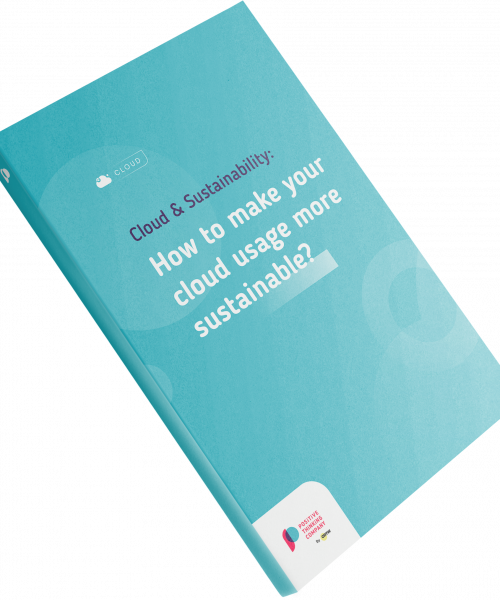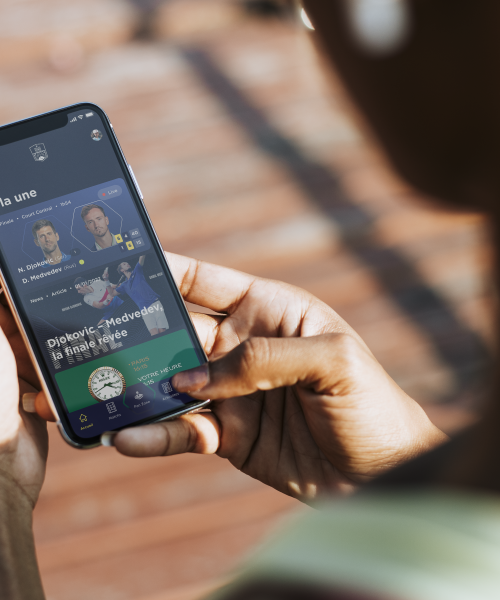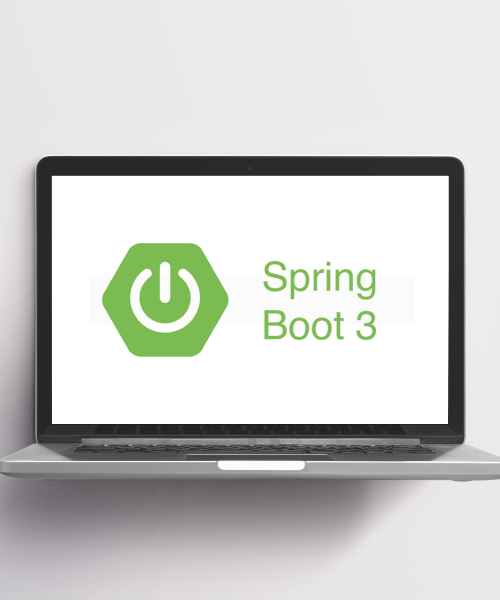SaaSification is a journey—and an exciting one. Immediately on embarking, you’ll begin to see the power of the cloud to offer win/win opportunities that benefit both customers and businesses.
Customers can soon count on better maintained products and services, more affordable pricing, and better support. Vendors, in turn, quickly see faster growth and better recurring revenue. Both will see the complexity and cost of scalability drop even as its speed increases.
We asked Jasper De Craeker, Delivery Leader at Positive Thinking Company to impart some wisdom on how SaaS not only means you get cool new tech, but also a completely revitalized mindset. That is a key point of any journey, after all!
Enjoy these excerpts from Jasper’s conversation with Ward Delanghe, CPO at CHILI publish.
On challenging traditional business models with new product delivery rules
Ward – The way companies provide access to their software products, and how their customers consume those services are constantly shifting. In recent years, we’ve seen more and more businesses adopt the benefits of using automation and the power of the cloud. At the same time, subscription models have been embraced as the ideal way to serve customers with the best possible software services. Nonetheless, without SaaSification as a component of that change, companies won’t have the right tools to scale.
So, I’d like to start today by asking for your take on why and how companies are moving away from license-based models in favor of subscription.
Jasper – In the bygone days of the software business, the license-based model was the most common sales model. This was far from a win-win situation. Selling software with an upfront cost meant high CapEx [Capital expenditure] for the customer and no recurring revenues for the software company. It also meant regular contract renewals and wasted money due to licenses sitting unused.
Something better had to come along, and it did: subscriptions.
With the subscription-based software model, vendors can finally rightsize their customers and tailor subscription contracts to the true needs of the businesses they serve.
On top of serving customers better, subscription-based licensing brings the obvious benefit of a steadier cash flow over a longer period for the software vendor.
Those are already great gains. But on the customer side there’s more. What was previously seen as hole-maker in the finance department’s pocket—expensive perennial software licenses—is now perceived as an affordable expense, requiring steadier but much smaller spending. In return for which, customers also get consumer service, technical support, and continuous innovation. That’s win/win!
Ward – So what do you see as the advantages of moving from CapEx to OpEx [Operating Expenses] for software purchases? And how do SaaS platforms enable businesses to be more fluid?
Jasper – From a financial point of view, OpEx items such as licenses generally go through an easier and faster approval process. Because they don’t have to be approved by infinite layers of management, the purchase is significantly faster and so customers can hit their business and technology goals faster. It also allows for more accurate forecasting as requests for additional CPU and memory are done on an as-needed basis.
Ward – Do you think embracing the cloud changes the rules of the go-to-market playbook?
Jasper – Absolutely. The cloud, if used in the right way, increases SaaS providers’ speed to market and fosters their business agility. Simple! Through judicious adoption of the cloud, IT processes automation can dramatically decrease time to market without the necessity of paying hefty costs.
Vendors see increased pace of product development, faster roll-out, and lower product delivery costs—all factors that can give SaaS applications a heightened competitive advantage. And, of course, this opens up new business opportunities for vendors too.
Ward – So you’re saying SaaSification isn’t just about emergent technologies—it’s about reprogramming mindsets, about challenging the norm. Right?
Jasper – Exactly! SaaS-ifying isn’t just about technology change or turning on the “cloud switch”—though that bit can be fun.
Migrating a legacy software to SaaS is a journey whose success requires a mindset shift that must permeate the entire business. So it becomes cultural—business culture—if you like.
In fact, this shift is often cited as the single most important predictor of successful cloud transformations.
Why is that? Simply because, like all enterprise-wide transformations, it takes people, processes, technology, but also culture to be 100% aligned for real progress.
In fact, the switch to SaaS not only impacts software development teams; it also has a tremendous effect on the rest of the business. That includes marketing and sales organization, accounting, finance, human resources, and of course management. Those teams often carry a “legacy baggage” which hinders software companies from fully embracing the benefits SaaSification can bring.
Faced with this, one interesting option for change management is to consider an organization’s cloud offering as a separate business unit supported by the hire of new dedicated resources for each department previously cited. This can eradicate the “legacy baggage” problem.
On the perks and benefits of tech in the Cloud with SaaSification
Ward – Both companies and their customers will take time to accept online subscription models for their software needs, but with the likes of Adobe® and Apple® seeing a huge boom in business with the launch of Adobe Creative Cloud and Apple One respectively, there’s already plenty of reason to feel confident in adopting a similar model for any software products or services a company sells.
At the same time, one has to wonder whether the lines between B2C and B2B business practices are blurring.
Jasper – B2C and B2B practices have become aligned on the same point: what all customers really want is a personalized experience, tailored to their needs and interests.
A buyer, whether they stand behind a business or not, is a real person. And behavior doesn’t vary so much between our professional and private lives. Who a customer is, how they consume content, and how they prefer to be addressed is therefore relatively constant between their two roles.
Just as they expect their streaming platform to recommend the best next movie to watch based on their interests and history, they expect prospective software providers to know what topics are most relevant to them and deliver the best-suited content that will answer their questions in a timely manner.
Meeting such expectations can be complex using traditional systems. SaaS solutions, on the other hand, allow companies to leverage their data. This is a big advantage. The analytics gathered on in-product behavior and interactions with the brand enable businesses to better understand their customers. This in turn, allows software companies to steer product development strategies and personalize customer journeys in order to create a smooth customer experience.
Ward – We’ve experienced how cloud connectivity enables developers and engineers to roll out software changes and updates at a greater speed to all users. By leveraging the benefits of cloud-based automation, customers also develop swifter go-to-market strategies. How does SaaS make that happen?
Jasper – SaaS creates a culture of continuous improvement. Where on-premises competitors will be reluctant to release upgrades because of time, cost, and a fear of going against an “if it ain’t broke, don’t fix it” mentality, SaaS companies can adopt new changes on the fly.
With the cloud, efforts associated with upgrades are much lower. As a matter of fact, as soon as new releases are tested, they can be rolled out in a heartbeat and be made available to customers without the need for them to pay for an upgrade package. That’s satisfying for customers.
Developers can also sandbox updates that can be viewed and tested by individual customers, giving them the choice to implement all, some, or none of the changes.
Ward – Let’s talk about capacity and scalability. How does SaaS support growth and meet the needs of a business as it scales?
Jasper – Well, scalability and elasticity are probably two of the most cited cloud benefits. The cloud architecture that allows the fast go-live capability mentioned above also makes it easy to change how users and organizations make use of the software.
On the customers’ side that means that some subscriptions allow them to purchase a tier that precisely suits their needs. Some SaaS providers also offer more granular, à la carte subscriptions. Some also offer features like vertical scaling so you can match resources to demand during peak periods.
All this benefits this customer’s IT department. Since SaaS solution providers can scale hardware needs in real-time, the customer’s IT team will be able to check things off its to-do list such as forecasting the company’s growth, planning infrastructure related requirements, or amping up computing resources as mentioned above. And once they’re checked off, they don’t come back later. It’s great in terms of freeing up IT team time for other tasks.
So we see that what is key is that the flexibility of the offering to customers is hardly limited at all by technology constraints. With SaaS, it’s all about what makes best business sense for customers and vendors alike. Again, it’s win/win—and it’s not possible without SaaS.
Ward – We’re strong believers in calibrating online and offline working, as we feel this creates a more seamless customer experience. What’s your take on this?
Jasper – I couldn’t agree more. The essence of a SaaS product is to provide customers with the best solution based on their needs. That means creating an optimized product with the features that customers require for their use cases.
The growth of “offline” functionality is therefore a natural evolution in the market. It accommodates a growing mobile workforce that is not always able to access to the Internet. Whether on long airline flights, or on train journeys with poor network coverage, users want to get job done.
These users need immediate access to applications in any situation; they require their SaaS tool and work-in-progress to be available instantly and easily. “Offline” options make this possible. And, as soon as a solid connection is available again, all the data is synced to online accounts. So, we see again that SaaS technologies are very adaptable in fulfilling evolving needs.
On the overall impact of SaaS on your operational infrastructure
Ward – One of the biggest perks a well-executed SaaS implementation delivers is the reduced IT overhead and the eliminated need for hardware maintenance.
SaaS enterprise-grade infrastructure supports 24/7 system monitoring/performance tuning and simplified case handling. Sound appealing?
Jasper – I’ll take it! A very welcome bonus to all the benefits listed above is that IT overhead costs and hardware maintenance are becoming things of the past. SaaS is removing the need for customers to buy servers, as well as maintain and manage data and applications.
SaaS providers manage everything on their customers’ behalf. As such, businesses can wave goodbye to expenses of hardware acquisition, provisioning, and maintenance. The same holds for software licensing, installation, training, and support.
This considerably reduces organizations’ IT overheads and simplifies their application needs. It’s a real boon for IT departments but also for the health of the whole company.
Add to this the productivity and reliability boost users get and there really is no better time to consider SaaSification in any scale of business. You mentioned at the beginning that SaaSification is a journey. The great thing about this journey is that none of us know how far we can go. What we do know is that setting out, we’re definitely moving in the right direction. The results already speak for themselves.
“Every SaaS Company wants to grow with double or triple digits. With the ongoing challenge to remain relevant in a crowded marketplace, SaaS providers should make it a priority to partner with experts that will boost product innovation and drive up productivity and performance.”

– Jasper De Craecker, Delivery Leader @Positive Thinking Company
Want to go SaaS?
Do you want to start planning your application(s) SaaS transformation? Get in touch with our SaaS experts to guide you through the process.









